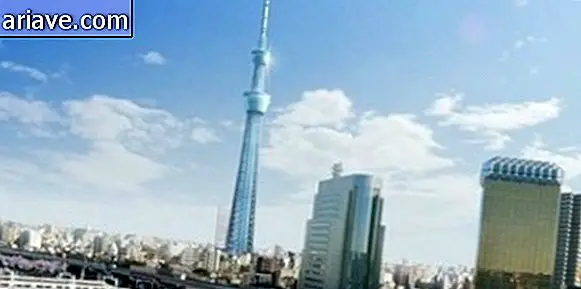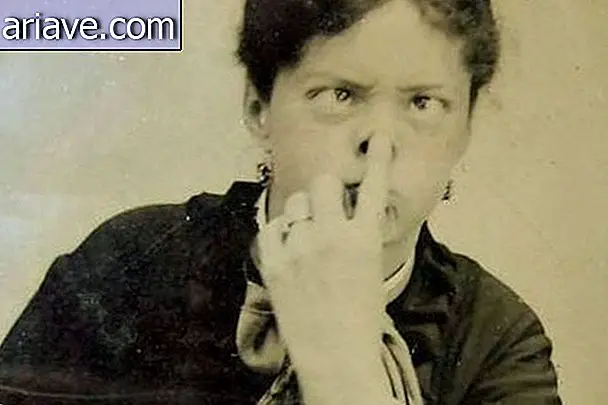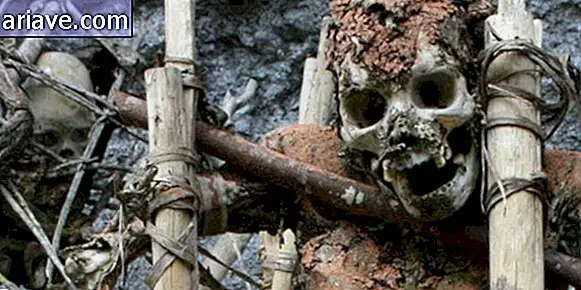11 Grim Facts About Hiroshima Disaster and Survivors
On August 6, 1945, US Army airmen dropped the atomic bomb on the Japanese city of Hiroshima, which was devastated by the massive explosion, killing thousands. Three days later, on August 9, it was Nagasaki's turn to be hit by another bomb.
To refresh the memory a bit, Vale recalls that the Hiroshima bomb was a 60-kilogram uranium-235 ballistic-type fission weapon. It was launched by the Enola Gay plane at 8:15 am that day, exploding about 600 meters from the ground.
A little of the history of the event in Hiroshima is on permanent display in the city itself at the Peace Memorial Museum. It is from there that come some descriptions, objects and ominous facts about the great disaster and the survivors of the tragedy.
For the sake of clarity, throughout this article (in some items) the terms “epicenter” and “hypocenter” are used. The difference between them is that the hypocenter of an explosion is the exact point from which it originated (from which the accumulated energy was released), while the epicenter is its manifestation on the surface. Check out the items below:
1 - Black nails

Yoshio Hamada, then 26, was exposed to the bomb in his barracks 900 meters from the hypocenter of the bomb blast. His left hand was on the windowsill when the bomb exploded. His middle and fourth fingers of his left hand were directly exposed to the heat rays and they were so burned that the skin and nails detached from their tips.
It has lost about an inch of the ends and, forever, strange black rod-shaped nails (as pictured) have grown straight from the skin on the tips of those fingers struck by heat rays and radioactivity.
However, what is even more curious is that the nails contained active blood vessels. With that, when the nails broke, large amounts of blood came out of them. And yet, the same kind of bizarre nail kept growing after breaking.
2 - Clothes in rags

At 34, Toshiko Takagi was exposed to the bomb at her workplace 1, 200 meters from the atomic bomb's hypocenter. Her face was charred and unrecognizable, but she managed to find her way home on her own.
Already in the hospital, Toshiko, in her fever delusions, kept calling her husband, Takayuki, who was by her side. On August 10, she died. Her body was cremated and her husband put away his tattered clothes from the rays of heat and explosion, which you can see in the image above.
3 - Damage from the explosion

The instant the atomic bomb was detonated, a super high pressure of hundreds of thousands of atmospheres was created in the epicenter. The surrounding air expanded enormously, generating a powerful explosion. Even 500 meters from the hypocenter, the pressure was extreme, having a force of 19 tons per square meter.
All wooden buildings within a radius of two kilometers were smashed. Thousands of victims died under collapsed houses. Window glass that was shattered by the blast flew through the air at enormous speeds, cutting people in half, blinding them or penetrating deep into their bodies.
4 - Glass fragments

The powerful explosion of the atomic bomb shattered windows and filled the air with shards of glass. Thousands of people fell victim to sharp shards of glass. Akihiro Takahashi found a piece of glass stuck in his nail. He damaged the fabrics that produced his nail and then it also grew like that of the first item on this list.
Many victims who had their bodies punctured by splinters of glass could not remove them due to poor post-bombing aid conditions. Even decades after the tragedy, some survivors found pieces of glass on their bodies and were able to surgically remove them.
5 - Writhing Iron Doors

The blast from the atomic bomb was extremely powerful, even for an Army Depot located 2, 670 meters from the hypocenter. The pressure of the bomb was so high that these iron doors were pushed in and practically crumpled up like paper. The roof was also badly damaged.
6 - Fire Damage

When the atomic bomb exploded, the houses that were located directly under the epicenter also exploded instantly in flames. Shortly thereafter, the flames burned throughout the city. All fuel within two kilometers of the hypocenter was burned. On the burned plain, everything had melted with the fires and covered the area like lava.
7 - Black Rain

Twenty to thirty minutes after the explosion, dust and soot scattered across the sky over Hiroshima began to rain like parts of the city. This rain fell within 18 miles of the hypocenter, spewing radioactive soot and dirt that had been blown into the air.
This white plaster wall seen in the picture above was part of a house about 3, 700 meters from the hippocenter. The black spots are still clearly visible. Traces of radioactive substances from the bomb were detected in these spots.
During the black rain, the temperature dropped dramatically. Survivors hit by her reported that they shivered in the midsummer. Many also got burned and, desperate for water, drank the black rain that fell, which caused them unpleasant effects beyond those they were already experiencing.
But this rain contained soot and other materials that had absorbed radiation. As a result, fish in tanks and rivers died. Wherever the black rain has fallen, it has taken damage. Many who drank well water suffered from diarrhea for three months.
8 - Acute Effects

The symptoms of radiation poisoning that appeared in people shortly after the atomic bombing were called acute effects. And they severely damaged the bodies of the victims. Radiation destroys cells, alters blood quality, damages the spinal cord and other organs, and causes many other serious injuries.
Anyone directly exposed to radiation within 1, 000 meters of the hypocenter received a heavy dose of risk of death and most, in fact, who survived at the time of the explosion died a few days after the tragedy. Some people who seemed completely unscathed began to vomit blood or died with purple spots all over their bodies.
9 - Other sequels

Radiation damage was not limited to weeks or months immediately after the bombing. The sequelae continued to manifest for decades. By the end of 1945, atomic bomb injuries seemed to be healed, but soon keloid scars, cataract-stricken vision, leukemia, and other cancers began to appear in many survivors.
Since Hiroshima was the first atomic bomb in history, no one knew what to expect from exposure to high levels of radiation. Survivors were forced to live with continuous anxiety, not knowing what symptoms might appear or when they would come. No effect on descendants of survivors has been proven.
10 - Origamis

Sadako Sasaki was two years old at the time of the bombing. She grew up healthy and strong. Ten years after the bombing, she suddenly developed leukemia and died after an eight-month battle with the disease. In his hospital room, Sadako folded several pieces of paper incessantly, expressing his desire to live. These you see in the image above are some of the origamis (from the traditional Tsuru - heron) made by her.
His death sparked a campaign, especially among children, to build a Children's Peace Monument to comfort the souls of children killed by the atomic bomb and fight for a peaceful world. Today millions of paper Tsurus made by children from around the world are delivered to this monument.
11 - First Aid Box

Immediately after the bombing, hospitals, schools and other buildings that survived the fire were transformed into "temporary relief" stations. Day after day, thousands of survivors went to these places to seek treatment. The scarce drugs available were soon depleted, but doctors, nurses and other volunteers did their best to provide whatever treatment they could.
Medical kits like this were used to transport supplies to army posts. He was in a garage at the Hiroshima Army Supply Depot 1, 200 meters from the hypocenter. Kanichi Sanada, an Army Division hygiene master sergeant, used the material from this kit to treat survivors at Fuchu School, which became a care station.











